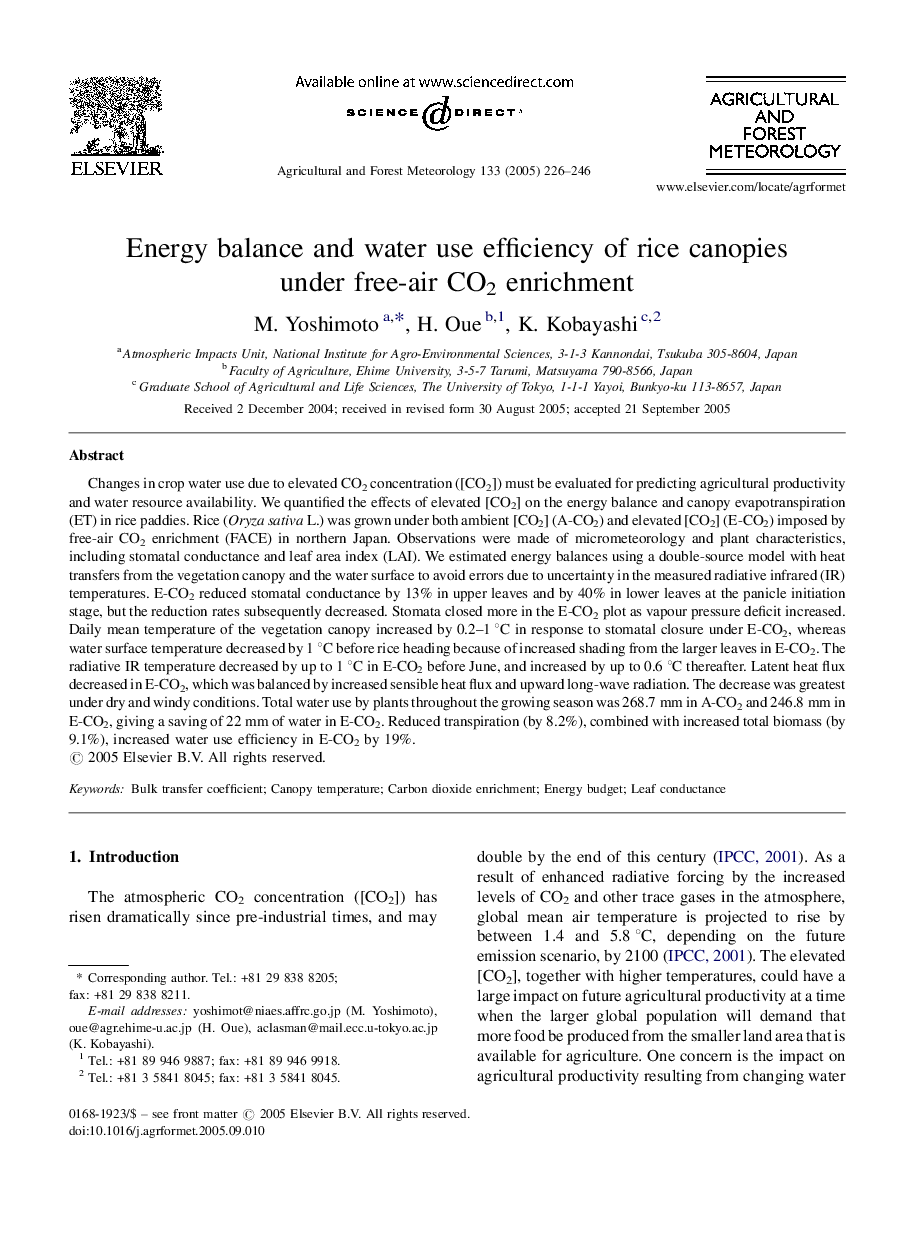| کد مقاله | کد نشریه | سال انتشار | مقاله انگلیسی | نسخه تمام متن |
|---|---|---|---|---|
| 9619437 | 158446 | 2005 | 21 صفحه PDF | دانلود رایگان |
عنوان انگلیسی مقاله ISI
Energy balance and water use efficiency of rice canopies under free-air CO2 enrichment
دانلود مقاله + سفارش ترجمه
دانلود مقاله ISI انگلیسی
رایگان برای ایرانیان
کلمات کلیدی
موضوعات مرتبط
مهندسی و علوم پایه
علوم زمین و سیارات
علم هواشناسی
پیش نمایش صفحه اول مقاله

چکیده انگلیسی
Changes in crop water use due to elevated CO2 concentration ([CO2]) must be evaluated for predicting agricultural productivity and water resource availability. We quantified the effects of elevated [CO2] on the energy balance and canopy evapotranspiration (ET) in rice paddies. Rice (Oryza sativa L.) was grown under both ambient [CO2] (A-CO2) and elevated [CO2] (E-CO2) imposed by free-air CO2 enrichment (FACE) in northern Japan. Observations were made of micrometeorology and plant characteristics, including stomatal conductance and leaf area index (LAI). We estimated energy balances using a double-source model with heat transfers from the vegetation canopy and the water surface to avoid errors due to uncertainty in the measured radiative infrared (IR) temperatures. E-CO2 reduced stomatal conductance by 13% in upper leaves and by 40% in lower leaves at the panicle initiation stage, but the reduction rates subsequently decreased. Stomata closed more in the E-CO2 plot as vapour pressure deficit increased. Daily mean temperature of the vegetation canopy increased by 0.2-1 °C in response to stomatal closure under E-CO2, whereas water surface temperature decreased by 1 °C before rice heading because of increased shading from the larger leaves in E-CO2. The radiative IR temperature decreased by up to 1 °C in E-CO2 before June, and increased by up to 0.6 °C thereafter. Latent heat flux decreased in E-CO2, which was balanced by increased sensible heat flux and upward long-wave radiation. The decrease was greatest under dry and windy conditions. Total water use by plants throughout the growing season was 268.7 mm in A-CO2 and 246.8 mm in E-CO2, giving a saving of 22 mm of water in E-CO2. Reduced transpiration (by 8.2%), combined with increased total biomass (by 9.1%), increased water use efficiency in E-CO2 by 19%.
ناشر
Database: Elsevier - ScienceDirect (ساینس دایرکت)
Journal: Agricultural and Forest Meteorology - Volume 133, Issues 1â4, 10 November 2005, Pages 226-246
Journal: Agricultural and Forest Meteorology - Volume 133, Issues 1â4, 10 November 2005, Pages 226-246
نویسندگان
M. Yoshimoto, H. Oue, K. Kobayashi,